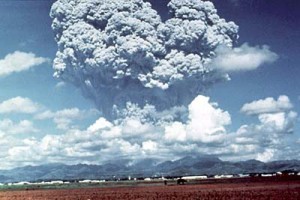In the last half-century, as the Earth continued to warm, the oceans absorbed 90% of the heat. That remaining 10% melted sea and land ice and warmed our land and atmosphere. Just 10% did that. You can now thank the oceans for saving us from ourselves. Go ahead I’ll wait.
In 2000 something drastically changed. Ocean temperature at the sea surface stopped rising. The absorption of this thermal energy stalled while increasing greenhouse gases should increased warming. Where did this missing energy go?
New research has found this missing energy in the deep oceans. The findings rise from a model (ORAS4) tested against and based on temperature and salinity data from 1958-2009, at least a dozen different data types, and all over the worlds oceans. This is massive undertaking and represents our best estimates of changes in the ocean’s heat, i.e. thermal energy, over the last half century.


The figure above outlines clearly where the heat is going—the deep oceans. The deepest oceans (purple line) have risen in heat content much greater than the oceans at 300 meters and less. Indeed, this discrepancy in energy uptake by different ocean depths appears to have started in the beginning of this century.
To give you some perspective the deep oceans in 2008 took near 20*1022 Joules (2*1015 Gigajoules). The average person in the U.S. uses about 301 Gigajoules of energy. So in 2008, the deep oceans took in the equivalent energy of that produced by 6,644,518,300,000 people (>6.6 trillion people). The current population of the world is just over 7 billion. Take a moment to let that settle in. Go ahead I’ll wait.
The figure above also show some interesting cooling periods following major volcanic eruptions—Agung,El Chichón, and Pinatubo. The last eruption in June of 1991 was the second largest eruption in the last century.
It ejected roughly 10,000,000,000 tonnes (1.1×1010 short tons) or 10 km3 (2.4 cu mi) of magma, and 20,000,000 tonnes (22,000,000 short tons) SO2, bringing vast quantities of minerals and metals to the surface environment. It injected large amounts of aerosol into the stratosphere – more than any eruption since that of Krakatoa in 1883. Over the following months, the aerosols formed a global layer of sulfuric acid haze. Global temperatures dropped by about 0.5 °C (0.9 °F), and ozone depletion temporarily increased substantially.
The bad news is that the deep oceans, the very inspiration of this blog, are on a long-term trajectory to a boiling pot of water. On the upside we are all just one catastrophic volcanic event away from cool bliss.
Magdalena A. Balmaseda, Kevin E. Trenberth and Erland Källén Distinctive climate signals in reanalysis of global ocean heat content Geophysical Research Letters 40 Article first published online: 10 MAY 2013 | DOI: 10.1002/grl.50382





Doc M, great article on this important paper, just want to note that the spelling of the volcano is El Chichón.
Thanks for catching this! Corrected.